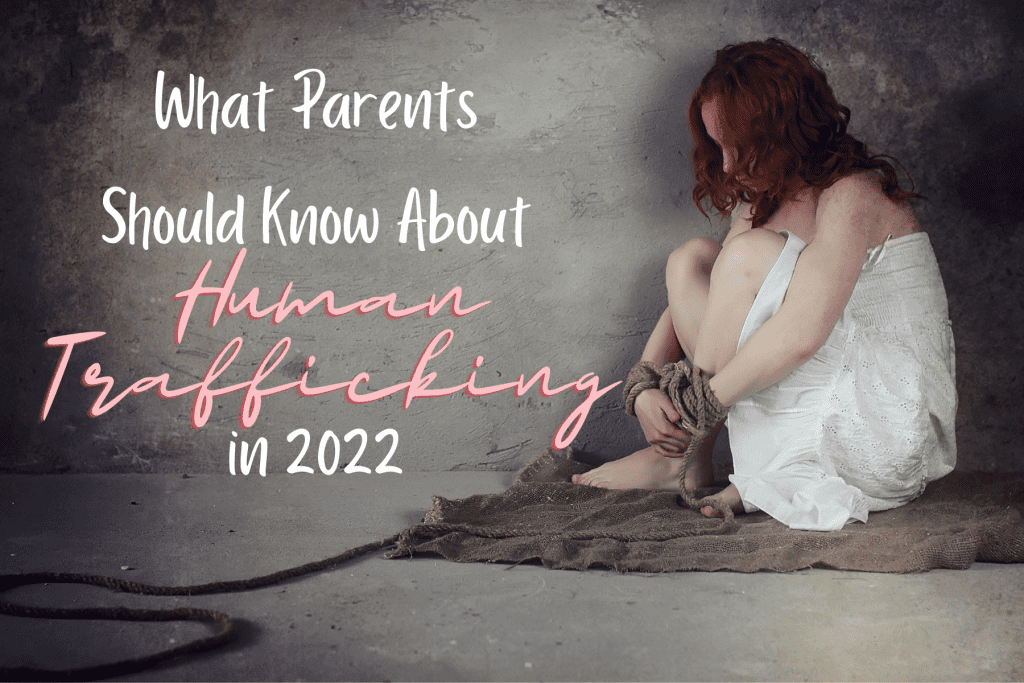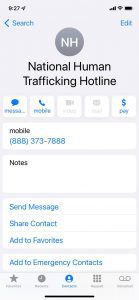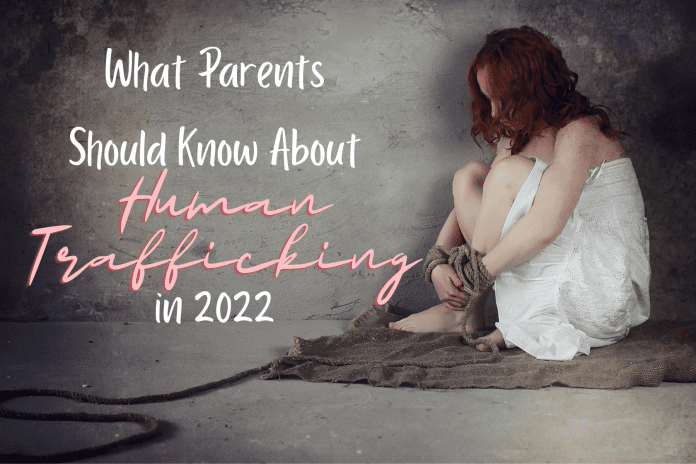In October of 2019, I wrote an article about human trafficking for this blog, and it went viral. If you haven’t read it yet, you should. All the crucial information for protecting your child is outlined there.
At the time, human trafficking was a very new topic to me, and the information I learned was not only eye-opening but also life-changing.
I wrote the article because I learned a small coffee shop in my town was using its proceeds to fight human trafficking, and the owner was a survivor. I walked into that shop looking for an interview; I walked out with a best friend and a new calling on my life.
Today, I am the Communications Director and an Advisory Board member for Love Missions Global, the non-profit that taught me (and countless others) about the very real dangers of human trafficking and how to protect my family.

Parenting in a Pandemic World
A few months after my previous article was published, the world essentially shut down. The Covid-19 pandemic upended life as we knew it, and we all scrambled to find new ways to do this thing called life. In an effort to protect our kids, we put them on tablets and computers and taught them how to do school from home. For the record, I’m not against distance learning. I’ve been homeschooling my kids since long before the pandemic made it cool. I want to bring to light an issue that many parents don’t think about when they consider their children’s education: online predators.
For sex trafficking predators, our decision to move students to online learning was a gift.
Kids who had always been watched and well-monitored on their electronic devices were given access to the world, and online predators knew just how to welcome them. Early on in the pandemic, many teachers reported having their virtual classrooms hacked and interrupted by menacing opportunists. On multiple occasions, predators exposed themselves, shared pornographic images, and unleashed ransomware attacks. Because these predators work online, it is very difficult for them to be identified and caught.
Polaris Project, a data-driven social justice moment, reported a 45% increase in phone calls to the National Human Trafficking Hotline during the “post-shelter-in-place” months of April through September of 2020. It’s safe to say that online predators welcomed the pandemic-stricken world to their cyber playground, then feasted upon the innocent.
What’s New in 2022
Why does what happened over the past two years matter now when most of our students are back to school and online classrooms have made great strides in securing their virtual doors?
Sadly, one of the many damaging effects of the pandemic has been the decline of mental health. Our kids are no exception. The rate of attempted suicides skyrocketed during the height of the pandemic, and students are still struggling with the psychological effects of isolation. In October of 2021, the American Academy of Pediatrics, the American Academy of Child and Adolescent Psychiatry, and the Children’s Hospital Association found the decline of mental health in our young people to be so devastating that they declared it a national emergency. The effects are expected to linger on for quite some time.
“Mental health concerns” is high on the list of vulnerabilities that human traffickers exploit to claim their victims. A young person dealing with depression, fear, or anxiety becomes an easy target. Don’t think it couldn’t happen to your child. Leading experts agree that if your child has a phone, tablet, or another device that allows him/her to communicate with the outside world, there is a 100% chance that he or she has already been targeted by a human trafficker. I guarantee those traffickers don’t introduce themselves as online predators. They pretend to be students, fellow gamers, and friends. In a world that has grown comfortable with moving all relationships to the cyber world, our students are sitting ducks for these manipulative masterminds.
What Can Parents Do
While this information is heart-breaking and utterly disturbing, there’s still hope. With the right tools, parents can arm themselves and their children from the attacks of online predators. Here is a short list of steps to take to better protect your students:
Monitor your children’s devices: Even if they’re in high school – no, especially if they’re in high school. Their prefrontal cortexes are not fully developed yet, and no matter how mature and responsible you think they are, they’re not beyond the reach of a manipulative pedophile. Download an app such as Bark to monitor their online presence, do random phone/laptop checks, and always know who your kids are talking to.
Create a new definition for the word “stranger:” When you and I grew up, “stranger danger” warned us against creepy men driving white vans who lured in kids with candy and puppies. Today’s “stranger danger” comes in the forms of people pretending to be someone they’re not in a social media or gaming app.
Groomers (the term we use to describe these online predators) will wait patiently for your child to trust them. They befriend them on an app, pretending to be someone your child’s age. They will play games with them, talk to them about boys or sports or school, and even send pictures of themselves that are really pictures of other kids they’ve lured in. They are masterminds at deception, and they will literally spend months grooming your child to become victims under the pretense of becoming a good, safe, age-appropriate friend. While some online friends may be completely harmless, thousands of them are pedophiles waiting to trap your child. The only way to protect them is by not allowing them to talk with people they haven’t already met in person through a safe channel such as school, church, or sports.
Have the hard talks: Nobody wants to talk about human trafficking and frankly, kids are tired of hearing warnings. If you want to truly help your kids protect themselves, have the hard conversations with them about what human trafficking looks like, who it affects, and what they can do if they think they know someone in danger.
Be informed: This article is just the tip of the iceberg. There’s so much more information out there. Read recent information from credible resources online. Find a local non-profit that trains parents and families on the signs of trafficking. If you can’t find a local resource, reach out to Love Missions and request a free virtual online training for your school, group, or family.
 Be proactive: Don’t wait until it happens to your child. Assume they are currently being targeted (because they are) and put safety measures in place. Put the National Human Trafficking Hotline phone number in your phone right now so if you see something, you can say something. It’s 888-373-7888.
Be proactive: Don’t wait until it happens to your child. Assume they are currently being targeted (because they are) and put safety measures in place. Put the National Human Trafficking Hotline phone number in your phone right now so if you see something, you can say something. It’s 888-373-7888.











